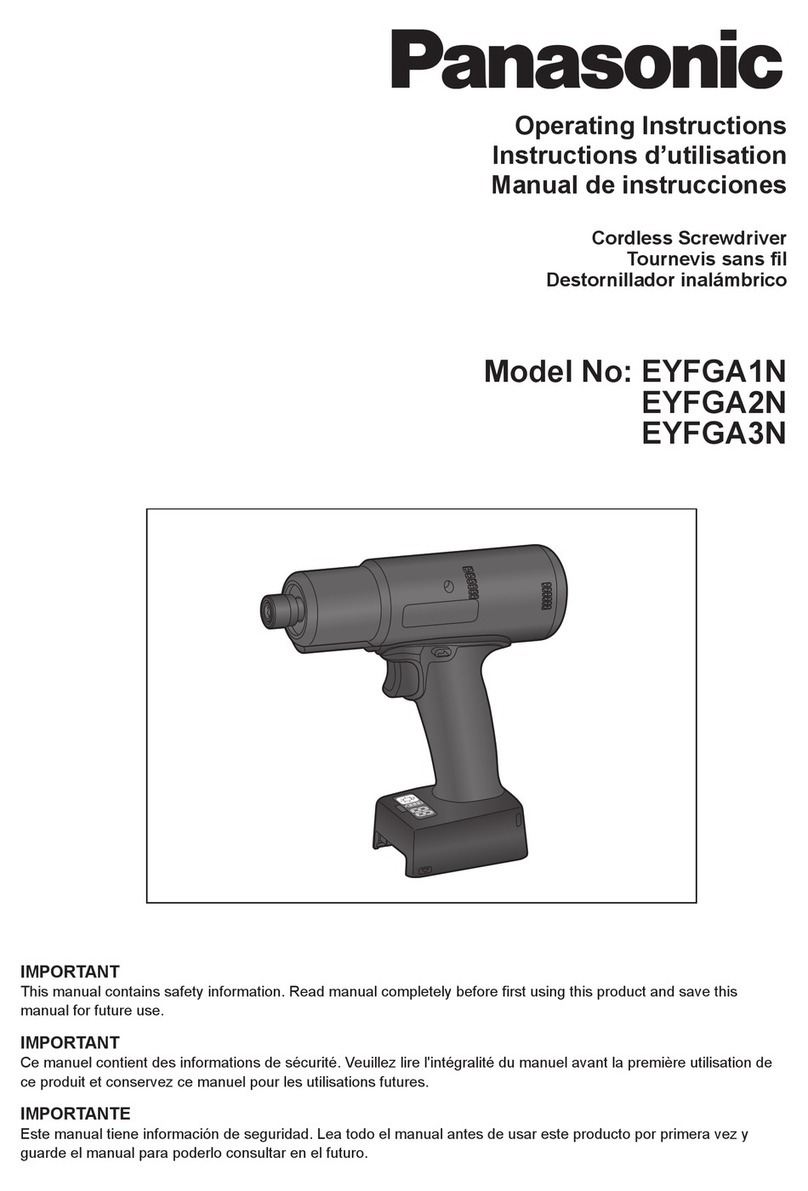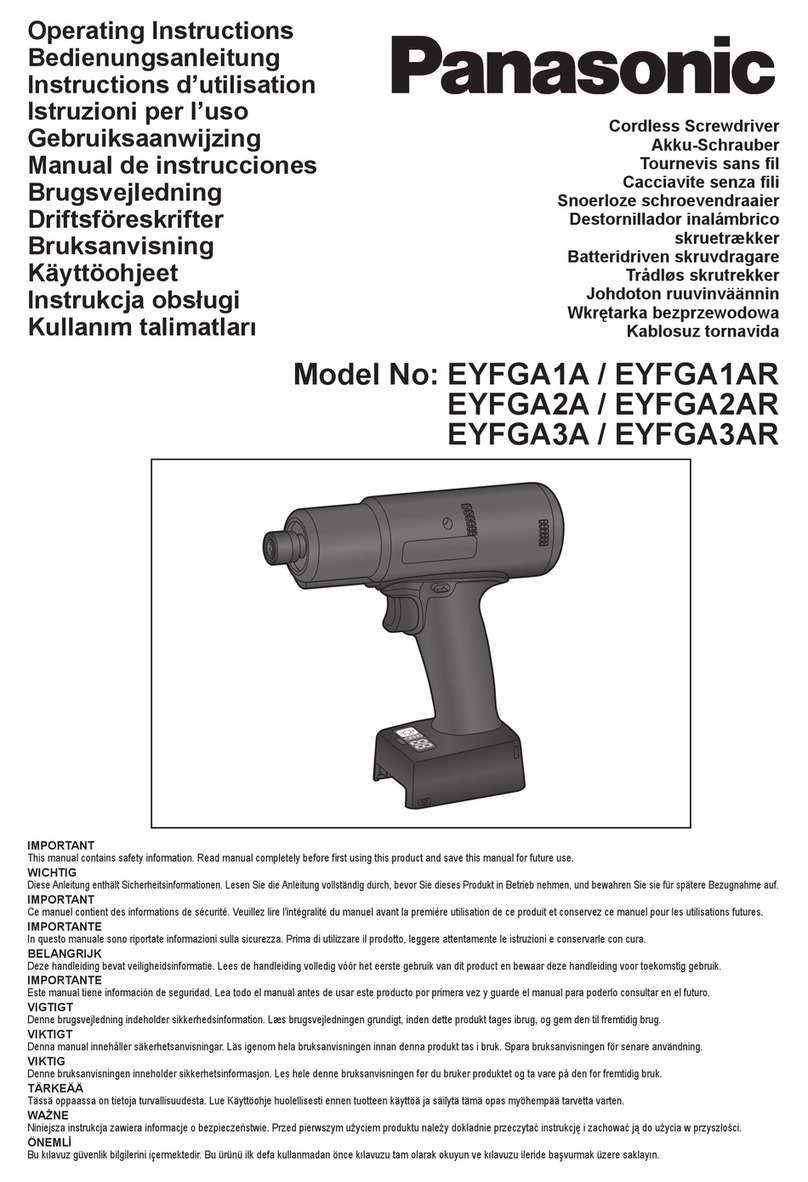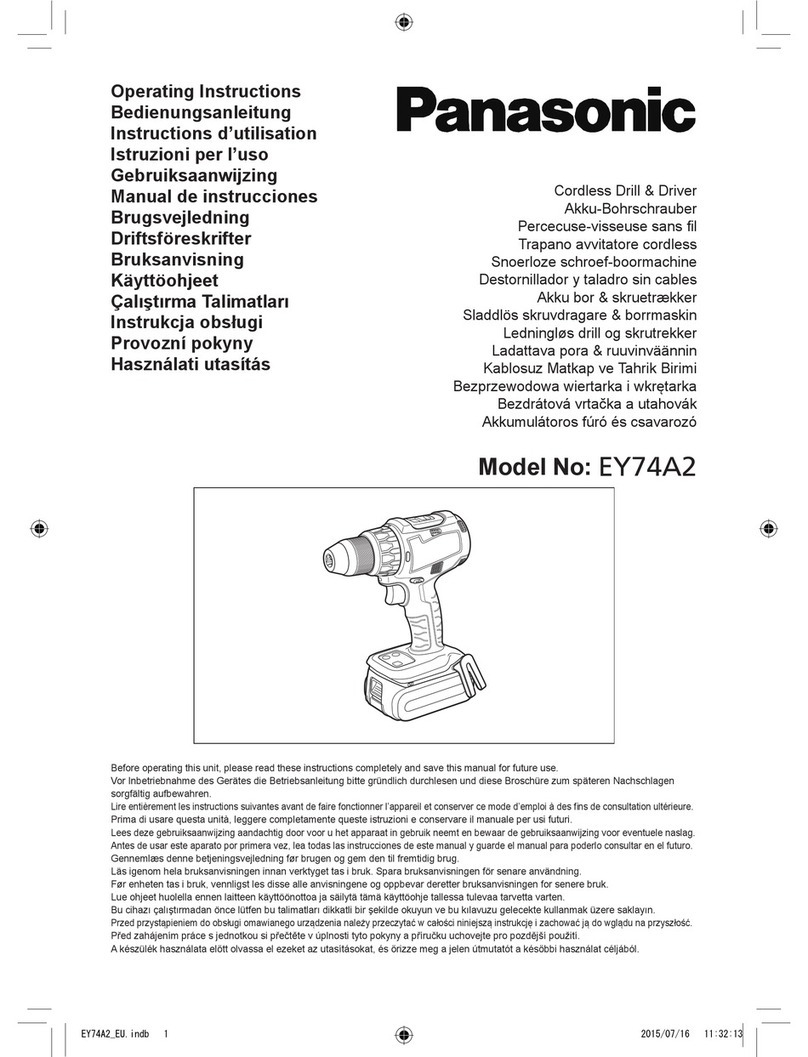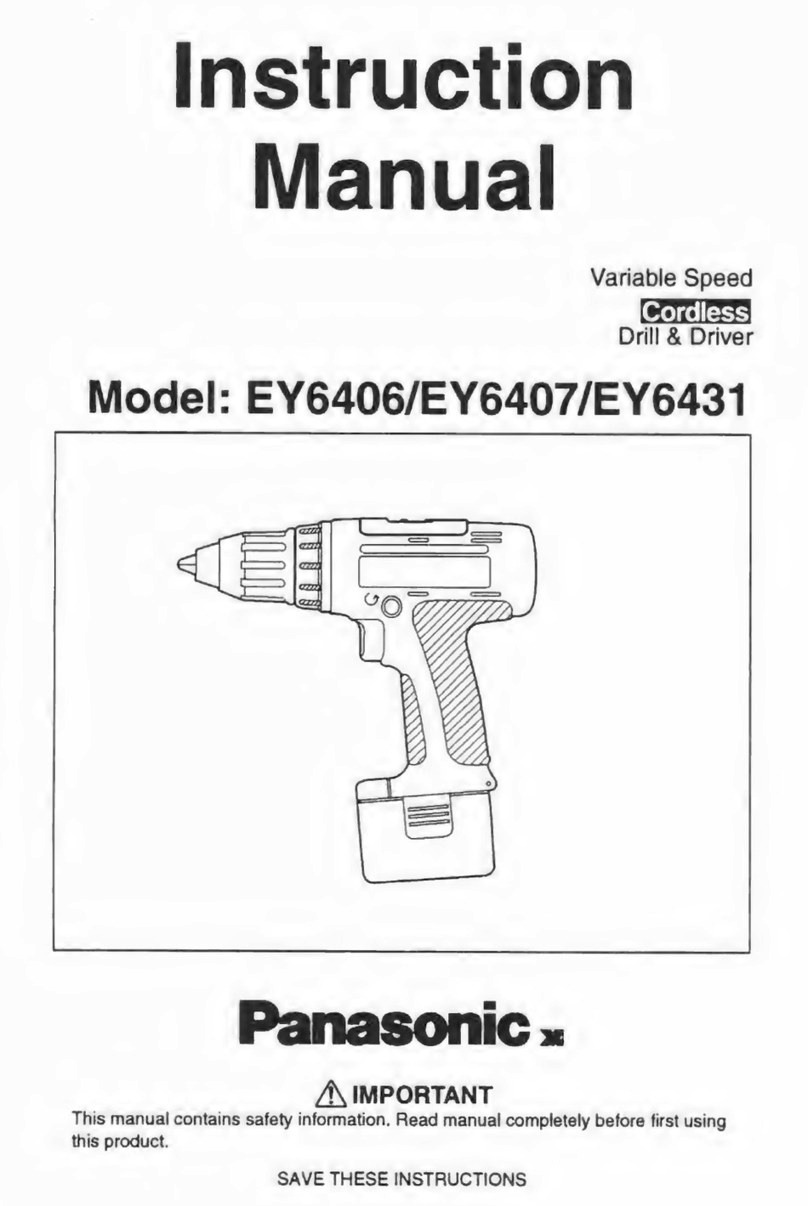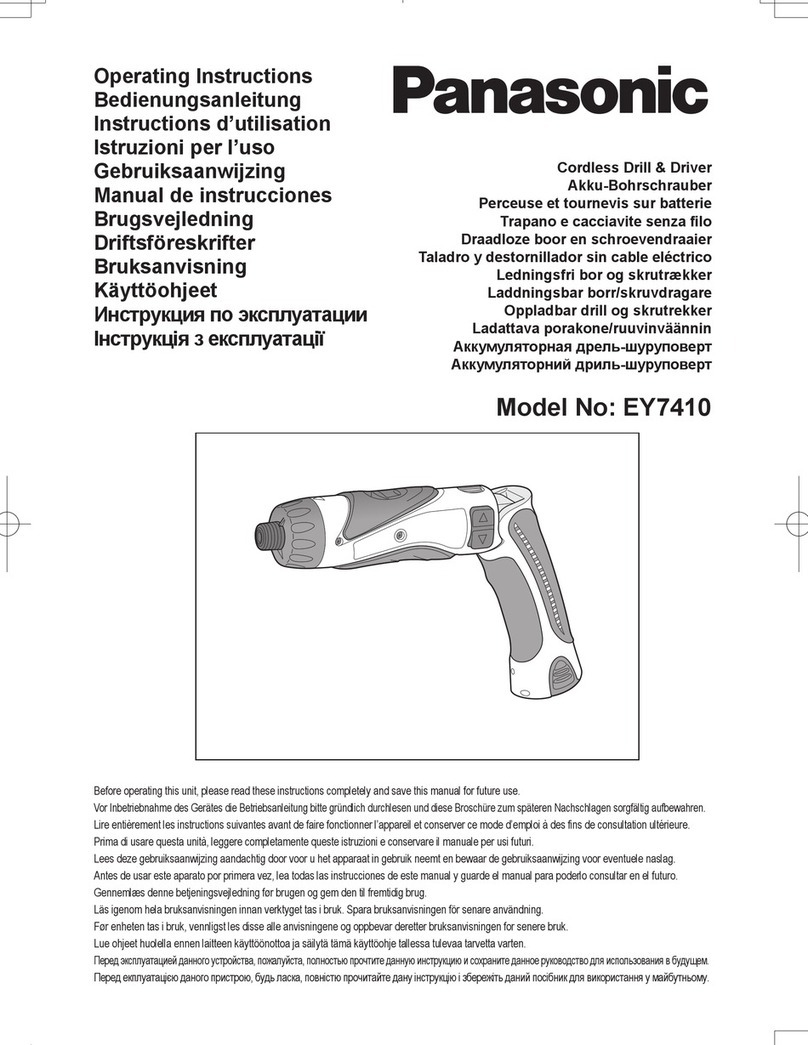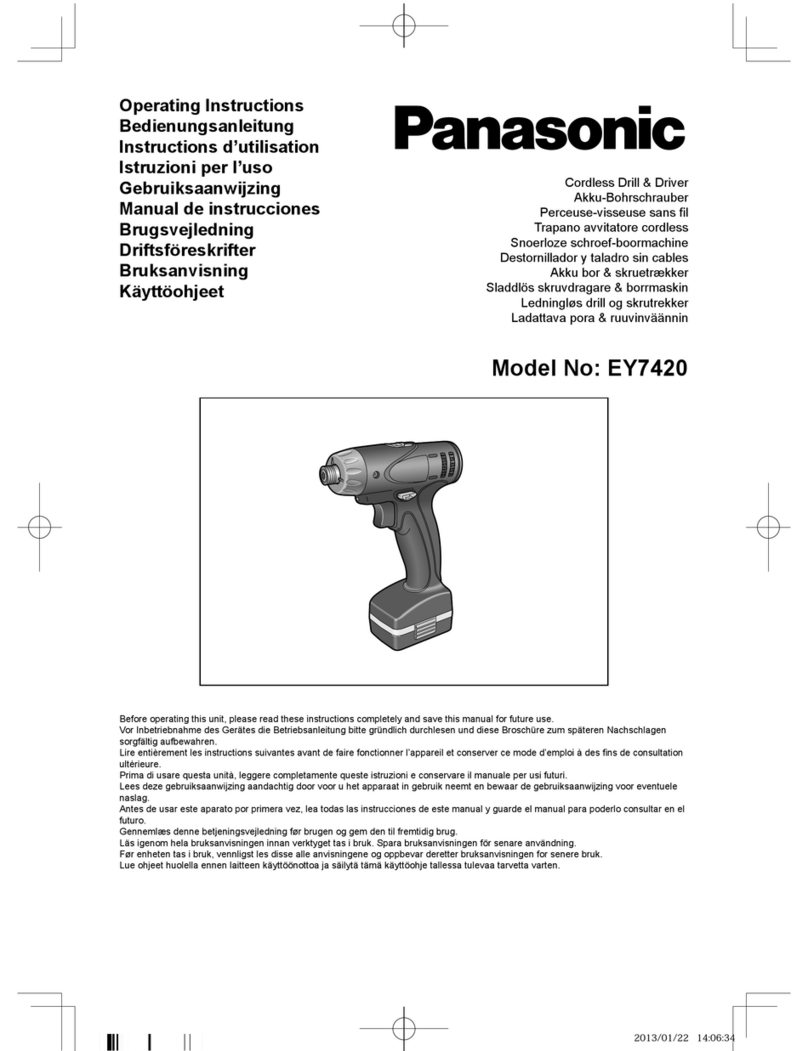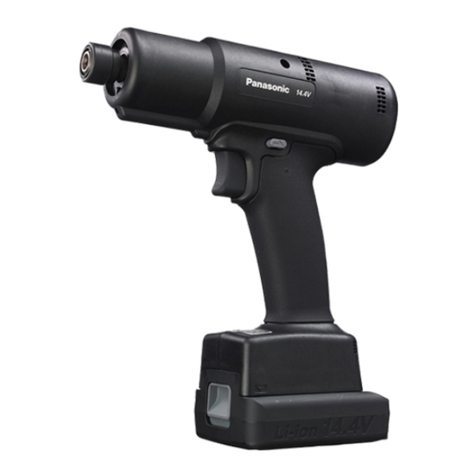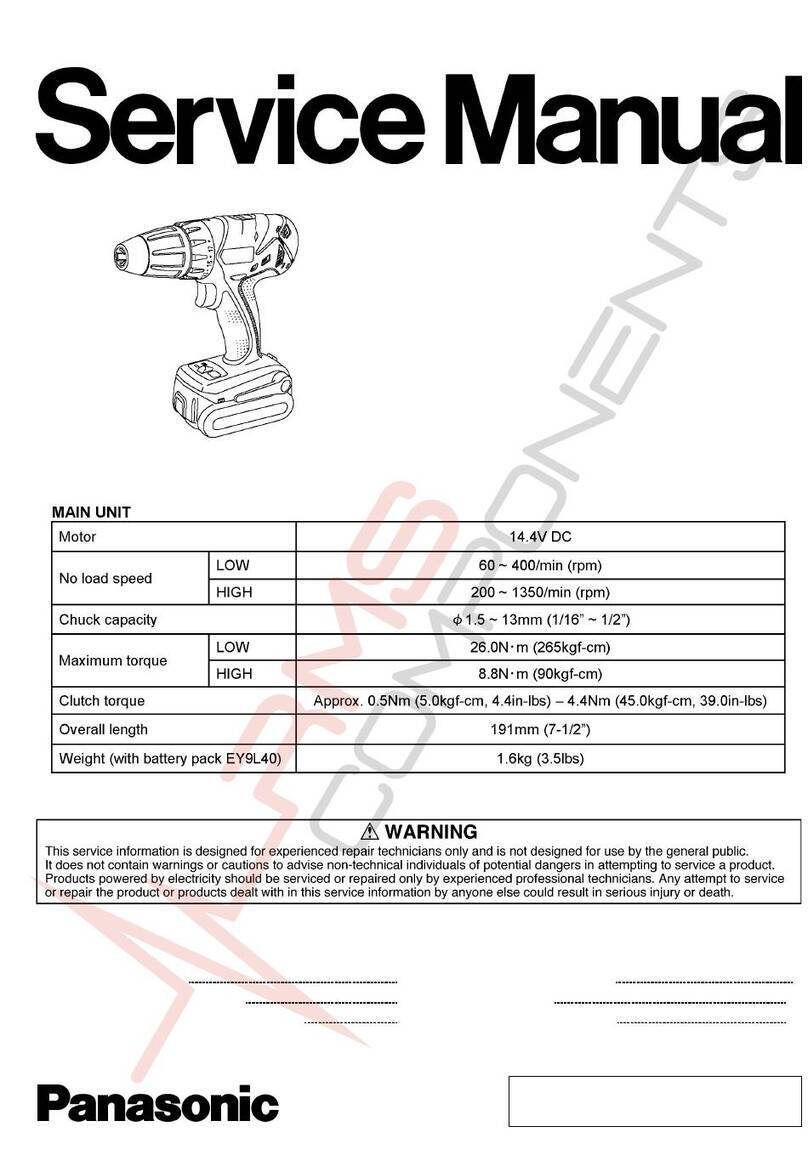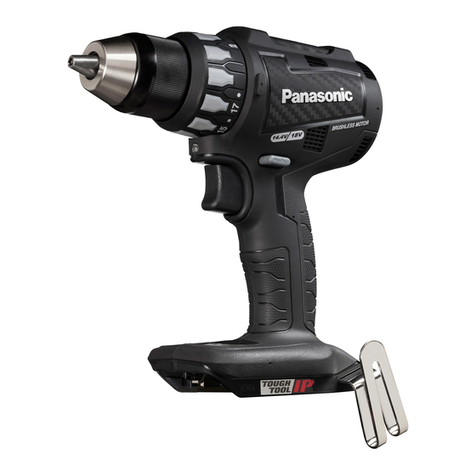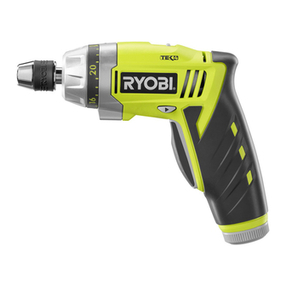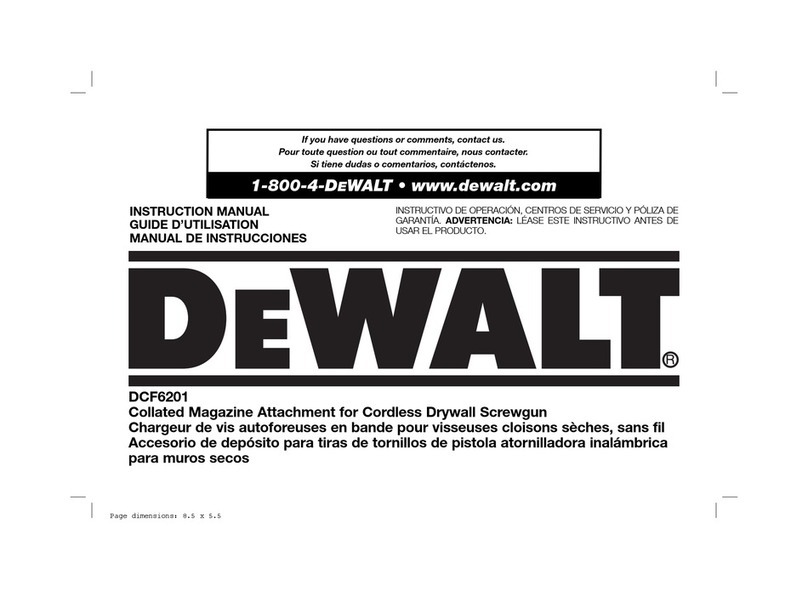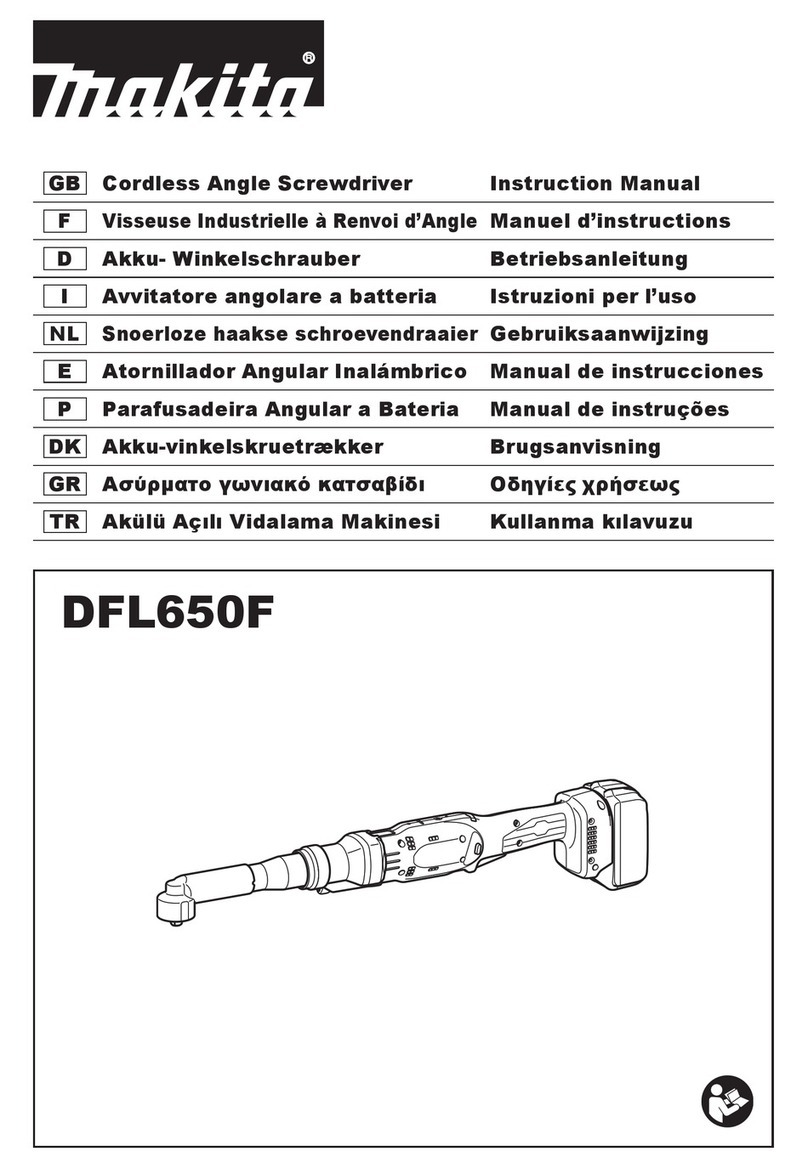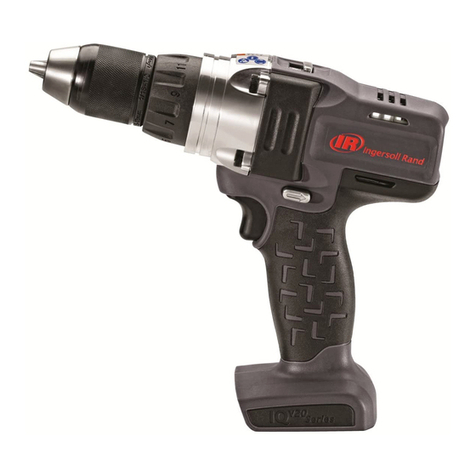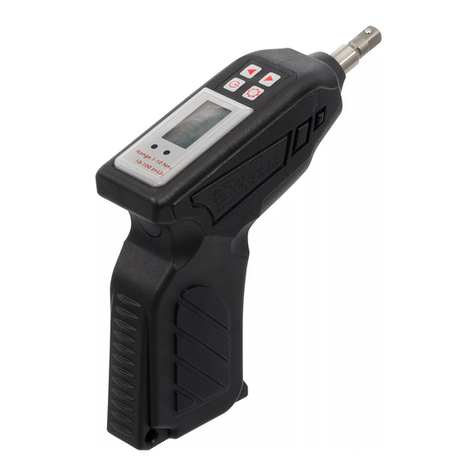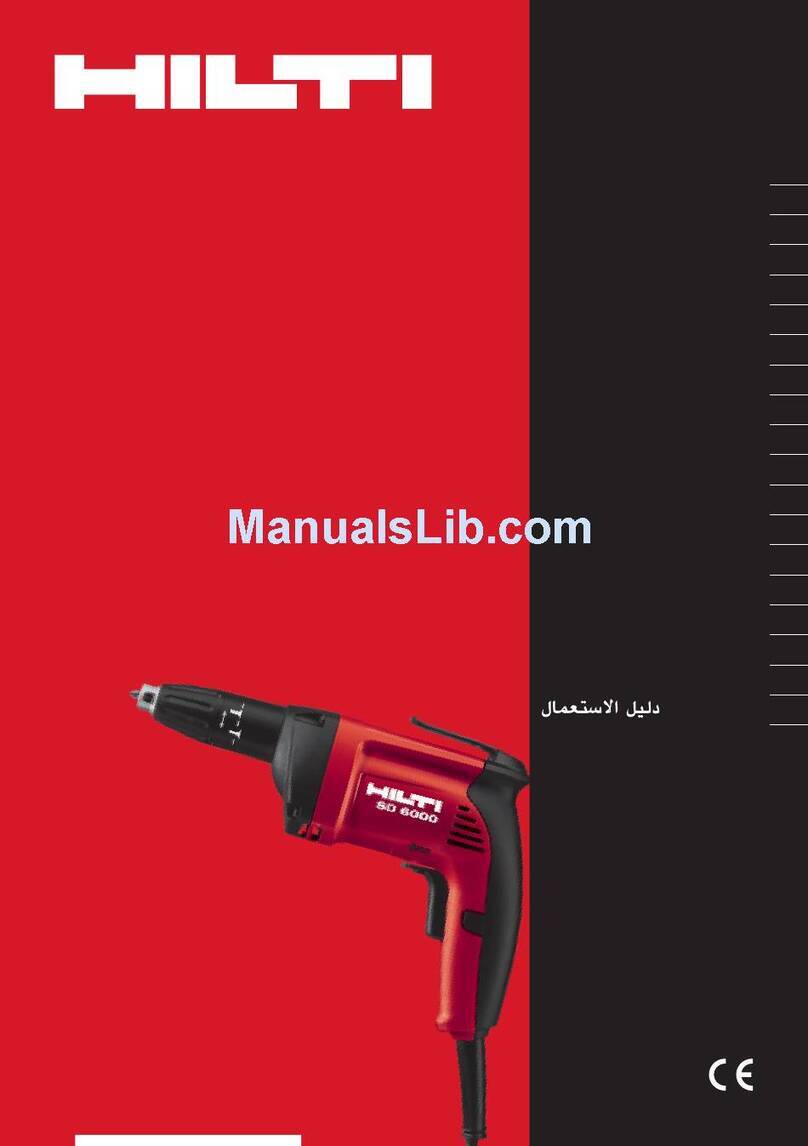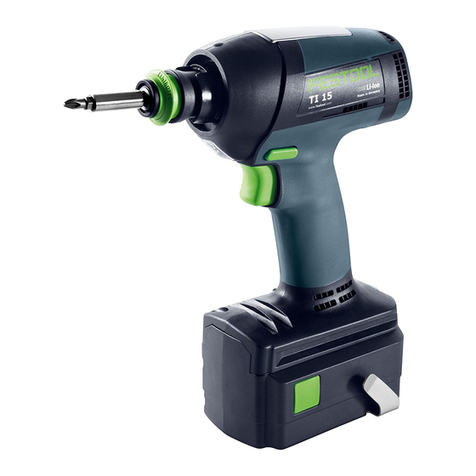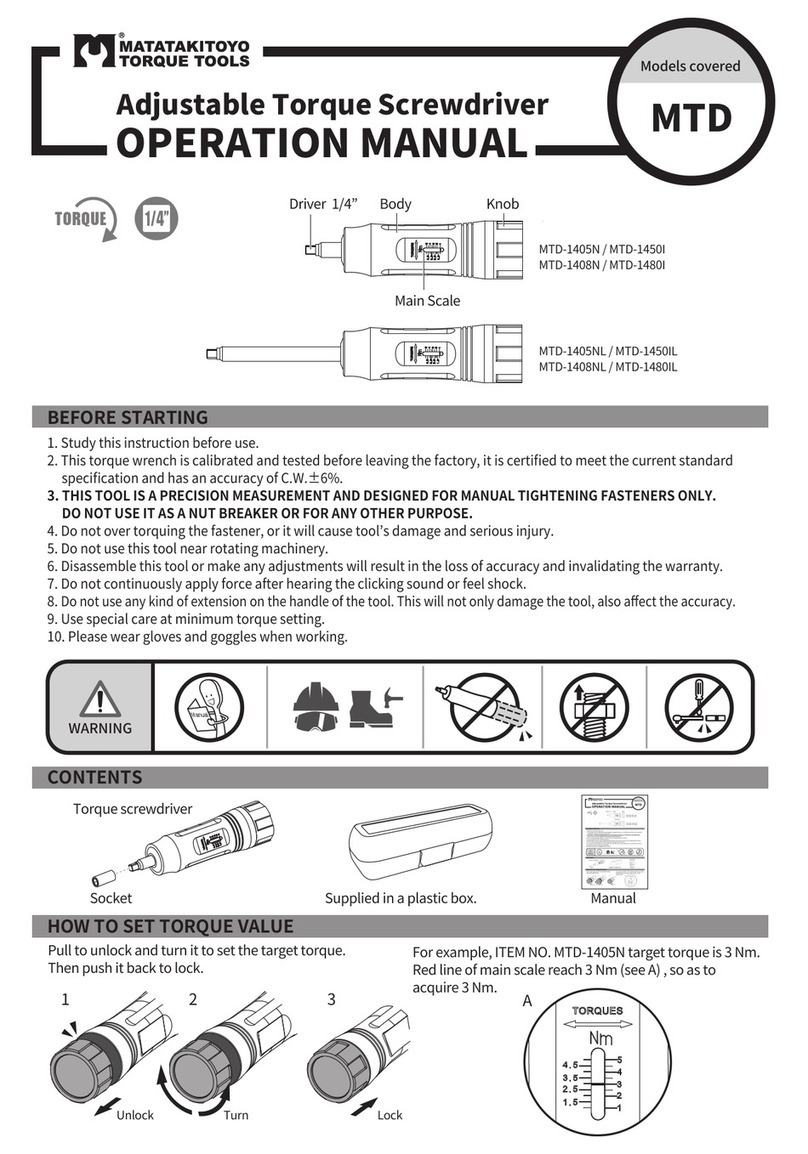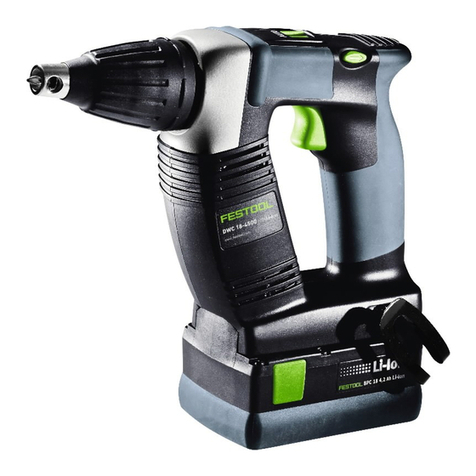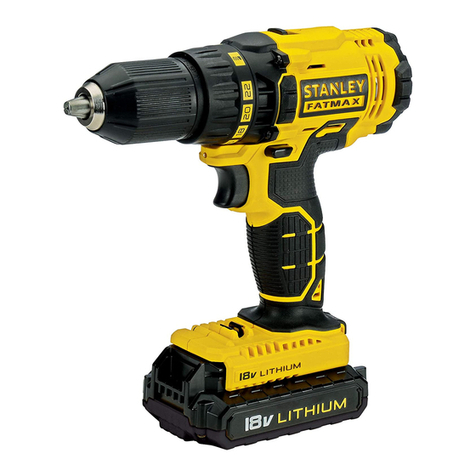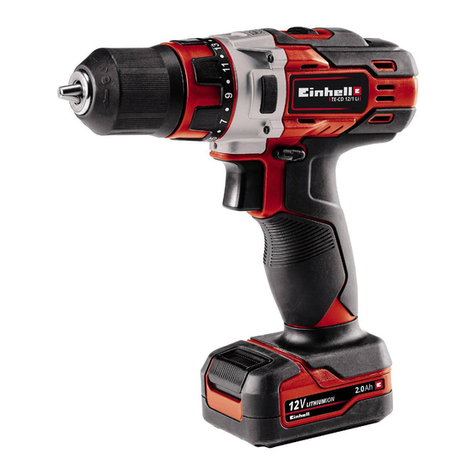16) Do not charge battery pack when the
temperature is BELOW 0°C (32°F)
orABOVE 40°C (104°F). This is very
important.
17) Do not incinerate the battery pack.
It can explode in a fire.
18) Avoid dangerousenvironment.Donot
use charger in damp or wet locations.
19) The charger is designed to operate
on standard household electrical
power only. Do not attempt to use it
on any other voltage!
20) Do not abuse cord. Never carry char-
ger by cord or yank it to disconnect
from outlet. Keep cord away from
heat, oil and sharp edges.
21) Charge the battery pack in a well
ventilated place, do not cover the
charger and battery pack with a
cloth, etc., while charging.
22) Use of an attachment not recom-
mended may result in a risk of fire,
electric shock, or injury to persons.
23) Do not short the battery pack. Abat-
tery short can cause a large current
flow, over heating and burns.
24) NOTE: If the supply cord of this appli-
ance is damaged, it must only be re-
placed by a repair shop appointed by
the manufacturer, because special
purpose tools are required.
25) TO REDUCE THE RISK OF ELEC-
TRIC SHOCK, THISAPPLIANCE
HASA POLARIZED PLUG (ONE
BLADE IS WIDER THAN THE
OTHER).
This plug will fit in a polarized outlet
only one way. If the plug does not fit
fully in the outlet, reverse the plug. If
it still does not fit, contact a qualified
electrician to install the proper outlet.
Do not change the plug in any way.
WARNING:
•DonotuseotherthanthePanasonic
battery packs that are designed for
use with this rechargeable tool.
•Panasonic is not responsible for any
damage or accident caused by the
use of the recycled battery pack and
the counterfeit battery pack.
•Do not dispose of the battery pack in
a fire, or expose it to excessive heat.
•Do not drive the likes of nails into the
battery pack, subject it to shocks,
dismantle it, or attempt to modify it.
•Do not allow metal objects to touch
the battery pack terminals.
•Do not carry or store the battery
pack in the same container as nails
or similar metal objects.
•Do not charge the battery pack in
a high-temperature location, such
as next to a fire or in direct sunlight.
Otherwise, the battery may over-
heat, catch fire, or explode.
•Never use other than the dedicated
charger to charge the battery pack.
Otherwise, the battery may leak,
overheat, or explode.
•After removing the battery pack from
the tool or the charger, always reat-
tach the pack cover. Otherwise, the
battery contacts could be shorted,
leading to a risk of fire.
•When the Battery Pack Has Deteri-
orated, Replace It with a New One.
Continued use of a damaged battery
pack may result in heat generation,
ignition or battery rupture.
V. ASSEMBLY
Attaching or Removing Bit
NOTE:
When attaching or removing a bit,
disconnect battery pack from tool
or place the switch in the center po-
sition (switch lock).
This tool is equipped with a keyless
drill chuck.
1. Attachment
Insert the bit and turn the lock collar
clockwise (looking from the front) to
tighten firmly until it stops clicking.

